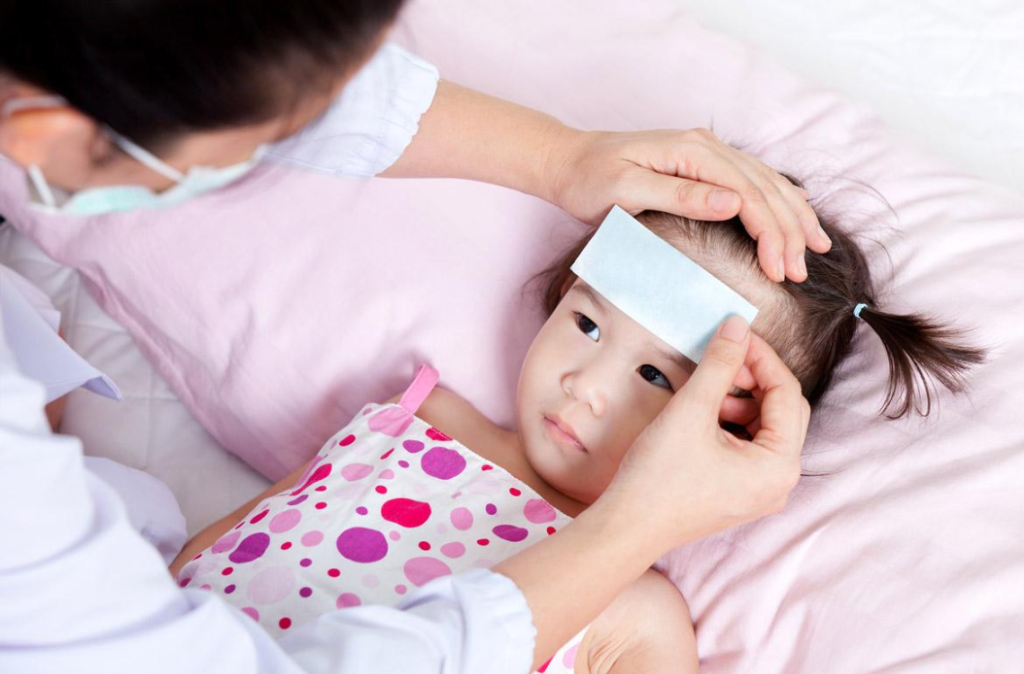A fever is a common occurrence in childhood, often signalling that the body is fighting off an infection. While it can be alarming for parents to see their child with a high temperature, it’s important to remember that fever itself is rarely a cause for serious concern. In fact, fever plays a vital role in the body’s defence mechanism by stimulating the immune system and creating an environment hostile to invading viruses and bacteria. However, recognising the signs and symptoms and knowing how to manage a fever effectively can help keep your child comfortable and ensure a speedy recovery.
Signs and Symptoms of Fever in Children
Firstly, it’s crucial to accurately determine if your child has a fever. A normal temperature can vary slightly, but generally, a reading of 38°C (100.4°F) or higher taken rectally is considered a fever. For oral readings, 37.5°C (99.5°F) is generally considered a fever. It’s important to use an appropriate thermometer and follow the instructions carefully to obtain an accurate reading. Alongside a high temperature, your child may exhibit other signs and symptoms, such as:
Feeling hot to the touch
Their forehead, back, or chest may feel warmer than usual. You might notice their skin feels flushed or appears redder than normal.
Increased sweating
They may perspire more than usual, even when resting. This is the body’s way of trying to cool down.
Changes in behaviour
They may seem more tired or less active than usual, or they might be more fussy, irritable, or clingy. They may also have difficulty sleeping.
Loss of appetite
They may show less interest in food and drink. This is quite common with fever, and it’s important to ensure they stay hydrated.
Physical complaints
They may complain of a headache, muscle aches, or chills. While chills can occur with a fever, they are more common when the temperature is rising rapidly.
5+ Tips to Bring Down Fever in Children
While fever is often a natural part of the body’s healing process, there are steps you can take to help your child feel more comfortable and reduce their temperature:
Encourage fluids
Fever can lead to dehydration, so it’s essential to ensure your child drinks plenty of fluids. Offer water, diluted juice, ice lollies, or oral rehydration solutions to keep them hydrated. Avoid sugary drinks as they can worsen dehydration. If your child is breastfeeding, offer more frequent feeds.
Dress lightly
Avoid overdressing your child. Dress them in light, breathable clothing and avoid heavy blankets. If they feel cold, you can add a light layer, but avoid bundling them up.
Keep their environment cool
Maintain a comfortable room temperature and ensure good ventilation. You can use a fan to circulate air, but avoid pointing it directly at your child. A cool compress on the forehead can also help.
Offer a lukewarm bath
A lukewarm bath can help cool your child down and make them more comfortable. Avoid cold baths, as they can cause shivering, which can raise their temperature. Add a small amount of baking soda to the bathwater to soothe the skin.
Administer medication if necessary
If your child is uncomfortable or their fever is high, you can give them children’s paracetamol or ibuprofen according to the recommended dosage for their age and weight. Always consult with your doctor or pharmacist if you have any concerns or questions about medication. Never give aspirin to a child.
Encourage rest
Rest is crucial for recovery. Encourage your child to rest and avoid strenuous activities. Quiet activities like reading, puzzles, or colouring can help keep them entertained while allowing their body to heal.
Offer comforting foods
While your child may not have a big appetite, offer them bland, easy-to-digest foods like soup, crackers, or toast. Avoid forcing them to eat if they’re not hungry.
Conclusion: When to Seek Medical Advice
In most cases, fever in children resolves within a few days with home care. However, it’s important to seek medical advice if:
- Your child is under 3 months old and has a fever.
- Your child’s fever lasts longer than 3 days.
- Your child’s fever is very high (above 40°C or 104°F).
- Your child shows signs of dehydration (e.g., decreased urination, dry mouth, sunken eyes).
- Your child has other concerning symptoms, such as a stiff neck, severe headache, a rash, difficulty breathing, or seizures.
- Your child seems unusually drowsy or unresponsive.
- You are concerned about your child’s condition.
Ultimately, trust your parental instincts. If you feel something is not right, don’t hesitate to seek medical attention. By understanding the signs and symptoms of fever and knowing how to manage it effectively, you can help your child navigate this common childhood ailment with comfort and confidence.
Disclaimer: The information provided in this article is for informational purposes only and should not be considered as medical advice from Mamahood. For any health-related concerns, it is advisable to consult with a qualified healthcare professional or medical practitioner.
For more insightful stories and parenting advice, stay tuned to Mamahood Singapore!
